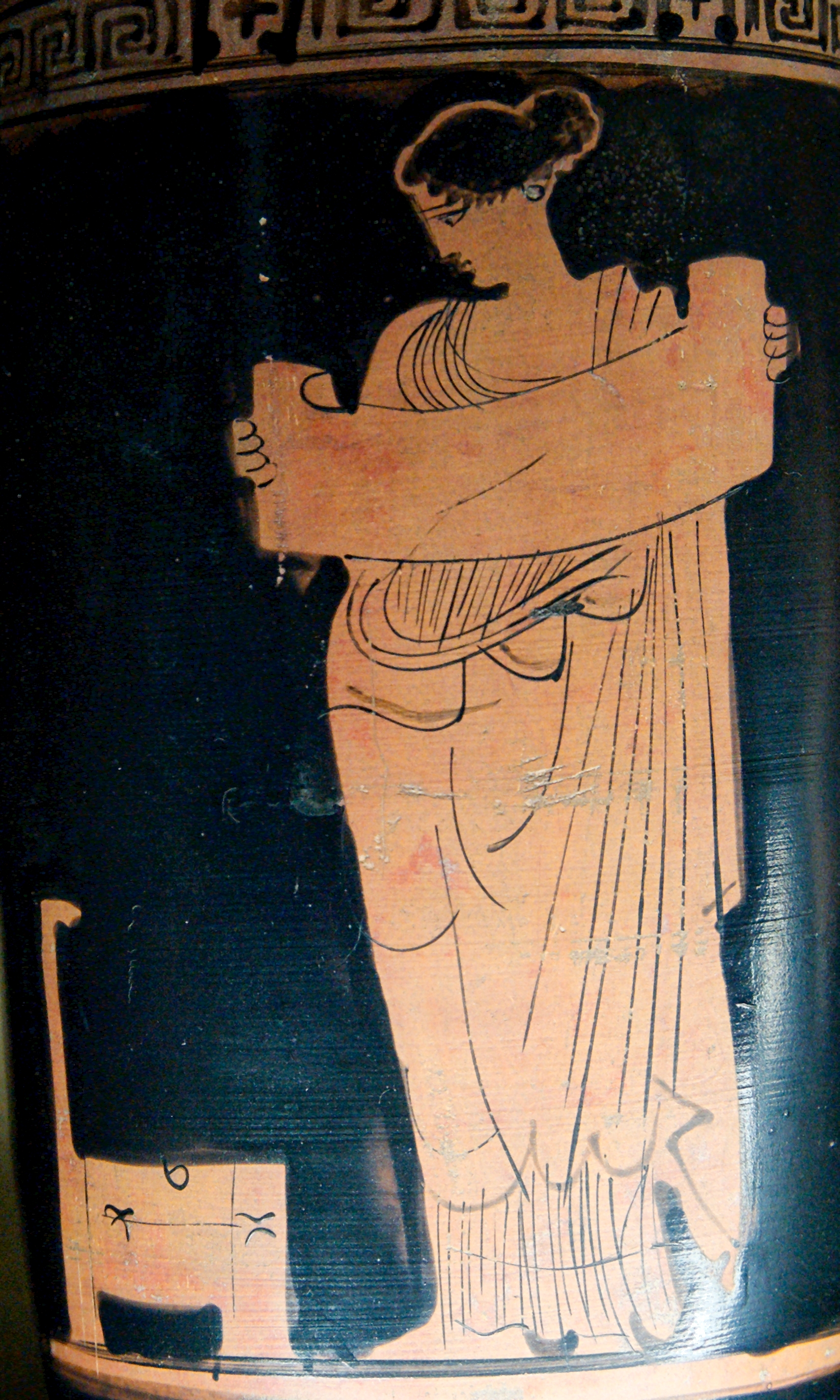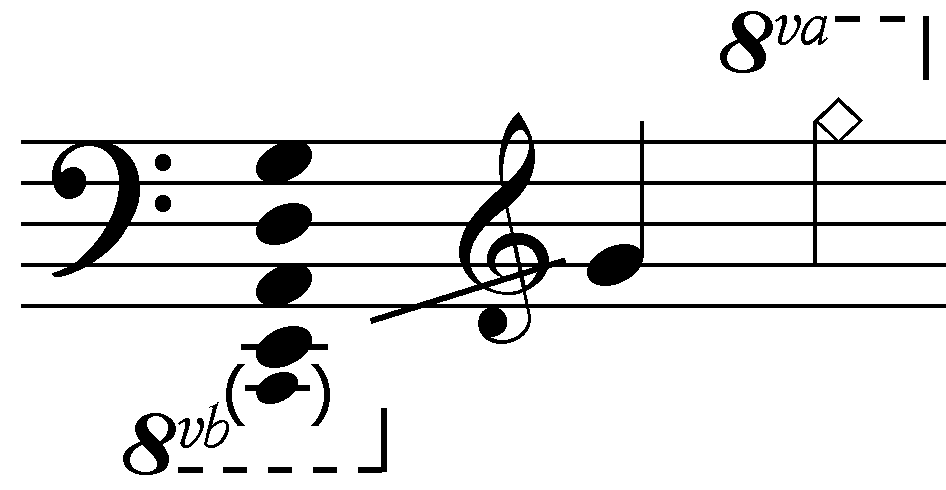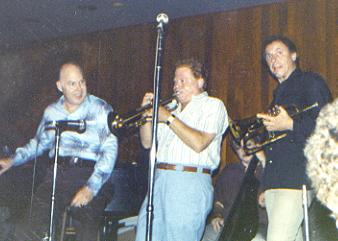|
Ira Sullivan Does It All
''Ira Sullivan Does It All'' is an album by multi-instrumentalist Ira Sullivan which was recorded in 1981 and released on the Muse label in 1983. accessed September 27, 2017 Reception The review by Scott Yanow stated "Most of the recordings by the early-'80s Red Rodney-Ira Sullivan Quintet were issued under Rodney's name, but this outing for Muse was an exception. .. this was a mighty group that consistently inspired Rodney to play music more advanced than bebop. Sullivan, who switches between soprano, alto and flugelhorn, matched well with Rodney ... Recommended".Track listing # "Sovereign Court" (Lou Berryman ...[...More Info...] [...Related Items...] OR: [Wikipedia] [Google] [Baidu] |
Ira Sullivan
Ira Sullivan (May 1, 1931 – September 21, 2020) was an American jazz trumpeter, flugelhornist, flautist, saxophonist, and composer born in Washington, D.C., United States. An active musician since the 1950s, he often worked with Red Rodney and Lin Halliday. Biography Sullivan was born on May 1, 1931, in Washington, D.C., United States. His father taught him to play the trumpet beginning at age 3, and his mother taught him saxophone. He played in 1950s Chicago, Illinois, with such musicians as Charlie Parker, Lester Young, Wardell Gray and Roy Eldridge, gaining a reputation as a fearsome bebop soloist. After playing briefly with Art Blakey in 1956, and mastering alto and baritone saxophone, Sullivan moved south to Florida and out of the spotlight in the early 1960s. His reluctance to travel limited his opportunities to play with musicians of the first rank, but Sullivan continued to play in the Miami area, often in schools and churches. Contact with local younger players, such ... [...More Info...] [...Related Items...] OR: [Wikipedia] [Google] [Baidu] |
Buddy DeSylva
George Gard "Buddy" DeSylva (January 27, 1895 – July 11, 1950) was an American songwriter, film producer and record executive. He wrote or co-wrote many popular songs and, along with Johnny Mercer and Glenn Wallichs, he co-founded Capitol Records. Biography DeSylva was born in New York City, but grew up in California, and attended the University of Southern California, where he joined the Theta Xi Fraternity. His Portuguese-born father, Aloysius J. De Sylva, was better known to American audiences as actor Hal De Forrest. His father was also a lawyer as well as an actor. His mother, Georgetta Miles Gard, was the daughter of Los Angeles police chief George E. Gard. DeSylva's first successful songs were those used by Al Jolson on Broadway in the 1918 production of ''Sinbad'', which included "I'll Say She Does". Soon thereafter, he met Jolson and in 1918 the pair went to New York and DeSylva began working as a songwriter in Tin Pan Alley. In the early 1920s, DeSylva freq ... [...More Info...] [...Related Items...] OR: [Wikipedia] [Google] [Baidu] |
Muse Records Albums
In ancient Greek religion and mythology, the Muses ( grc, Μοῦσαι, Moûsai, el, Μούσες, Múses) are the inspirational goddesses of literature, science, and the arts. They were considered the source of the knowledge embodied in the poetry, lyric songs, and myths that were related orally for centuries in ancient Greek culture. Melete, Aoede, and Mneme are the original Boeotian Muses, and Calliope, Clio, Erato, Euterpe, Melpomene, Polyhymnia, Terpsichore, Thalia, and Urania are the nine Olympian Muses. In modern figurative usage, a Muse may be a source of artistic inspiration. Etymology The word ''Muses'' ( grc, Μοῦσαι, Moûsai) perhaps came from the o-grade of the Proto-Indo-European root (the basic meaning of which is 'put in mind' in verb formations with transitive function and 'have in mind' in those with intransitive function), or from root ('to tower, mountain') since all the most important cult-centres of the Muses were on mountains or hill ... [...More Info...] [...Related Items...] OR: [Wikipedia] [Google] [Baidu] |
Drum Kit
A drum kit (also called a drum set, trap set, or simply drums) is a collection of drums, cymbals, and other auxiliary percussion instruments set up to be played by one person. The player (drummer) typically holds a pair of matching drumsticks, one in each hand, and uses their feet to operate a foot-controlled hi-hat and bass drum pedal. A standard kit may contain: * A snare drum, mounted on a stand * A bass drum, played with a beater moved by a foot-operated pedal * One or more tom-toms, including rack toms and/or floor toms * One or more cymbals, including a ride cymbal and crash cymbal * Hi-hat cymbals, a pair of cymbals that can be manipulated by a foot-operated pedal The drum kit is a part of the standard rhythm section and is used in many types of popular and traditional music styles, ranging from rock and pop to blues and jazz. __TOC__ History Early development Before the development of the drum set, drums and cymbals used in military and orchestral mu ... [...More Info...] [...Related Items...] OR: [Wikipedia] [Google] [Baidu] |
Double Bass
The double bass (), also known simply as the bass () (or #Terminology, by other names), is the largest and lowest-pitched Bow (music), bowed (or plucked) string instrument in the modern orchestra, symphony orchestra (excluding unorthodox additions such as the octobass). Similar in structure to the cello, it has four, although occasionally five, strings. The bass is a standard member of the orchestra's string section, along with violins, viola, and cello, ''The Orchestra: A User's Manual'' , Andrew Hugill with the Philharmonia Orchestra as well as the concert band, and is featured in Double bass concerto, concertos, solo, and chamber music in European classical music, Western classical music.Alfred Planyavsky [...More Info...] [...Related Items...] OR: [Wikipedia] [Google] [Baidu] |
Jay Anderson
Jay Anderson (born October 24, 1955) is an American jazz double-bassist and studio musician. Career Anderson received a bachelor's degree from California State University, Long Beach in 1978, then worked with Woody Herman (1978-1979), Carmen McRae (1979-1981), and a quartet led by Ira Sullivan and Red Rodney (1981-1986). Anderson remained with Rodney through 1992, also working with Michael Brecker during this time, and played with Toots Thielemans and Joe Sample for much of the 1990s. As a sideman, he played with Randy Brecker, Michael Brecker, Eliane Elias, Toshiko Akiyoshi, Bennie Wallace, Brian Lynch, Bob Belden, Warren Bernhardt, Joey Calderazzo, Dave Stryker, Mike Stern, Chaka Khan, Terumasa Hino, Michel Legrand, Tiger Okoshi, Lynne Arriale, Bob Mintzer, George Cables, Paul Bley, Frank Zappa, Tom Waits, Dr. John, Rich Perry, Vic Juris, and Lee Konitz. He was a professor at Manhattan School of Music. Discography As leader * ''Next Exit'' (DMP, 1992) * ''Local Color ... [...More Info...] [...Related Items...] OR: [Wikipedia] [Google] [Baidu] |
Piano
The piano is a stringed keyboard instrument in which the strings are struck by wooden hammers that are coated with a softer material (modern hammers are covered with dense wool felt; some early pianos used leather). It is played using a musical keyboard, keyboard, which is a row of keys (small levers) that the performer presses down or strikes with the fingers and thumbs of both hands to cause the hammers to strike the strings. It was invented in Italy by Bartolomeo Cristofori around the year 1700. Description The word "piano" is a shortened form of ''pianoforte'', the Italian term for the early 1700s versions of the instrument, which in turn derives from ''clavicembalo col piano e forte'' (key cimbalom with quiet and loud)Pollens (1995, 238) and ''fortepiano''. The Italian musical terms ''piano'' and ''forte'' indicate "soft" and "loud" respectively, in this context referring to the variations in volume (i.e., loudness) produced in response to a pianist's touch or pressure on ... [...More Info...] [...Related Items...] OR: [Wikipedia] [Google] [Baidu] |
Bassoon
The bassoon is a woodwind instrument in the double reed family, which plays in the tenor and bass ranges. It is composed of six pieces, and is usually made of wood. It is known for its distinctive tone color, wide range, versatility, and virtuosity. It is a non-transposing instrument and typically its music is written in the bass and tenor clefs, and sometimes in the treble. There are two forms of modern bassoon: the Buffet (or French) and Heckel (or German) systems. It is typically played while sitting using a seat strap, but can be played while standing if the player has a harness to hold the instrument. Sound is produced by rolling both lips over the reed and blowing direct air pressure to cause the reed to vibrate. Its fingering system can be quite complex when compared to those of other instruments. Appearing in its modern form in the 19th century, the bassoon figures prominently in orchestral, concert band, and chamber music literature, and is occasionally heard in pop, ro ... [...More Info...] [...Related Items...] OR: [Wikipedia] [Google] [Baidu] |
Trumpet
The trumpet is a brass instrument commonly used in classical and jazz ensembles. The trumpet group ranges from the piccolo trumpet—with the highest register in the brass family—to the bass trumpet, pitched one octave below the standard B or C trumpet. Trumpet-like instruments have historically been used as signaling devices in battle or hunting, with examples dating back to at least 1500 BC. They began to be used as musical instruments only in the late 14th or early 15th century. Trumpets are used in art music styles, for instance in orchestras, concert bands, and jazz ensembles, as well as in popular music. They are played by blowing air through nearly-closed lips (called the player's embouchure), producing a "buzzing" sound that starts a standing wave vibration in the air column inside the instrument. Since the late 15th century, trumpets have primarily been constructed of brass tubing, usually bent twice into a rounded rectangular shape. There are many di ... [...More Info...] [...Related Items...] OR: [Wikipedia] [Google] [Baidu] |
Red Rodney
Robert Roland Chudnick (September 27, 1927 – May 27, 1994), known professionally as Red Rodney, was an American jazz trumpeter. Biography Born in Philadelphia, Pennsylvania, he became a professional musician at 15, working in the mid-1940s for the big bands of Jerry Wald, Jimmy Dorsey, Georgie Auld, Elliot Lawrence, Benny Goodman, and Les Brown. He was inspired by hearing Dizzy Gillespie and Charlie Parker to change his style to bebop, moving on to play with Claude Thornhill, Gene Krupa, and Woody Herman. He was Jewish. He accepted an invitation from Charlie Parker to join his quintet. and was a member of the band from 1949 to 1951. Being the only white member of the group, when playing in the southern United States he was billed as "Albino Red" as a ruse to avoid prejudice against mixed race musical combos. During this time he recorded extensively. During the 1950s, he worked as a bandleader in Philadelphia and recorded with Ira Sullivan. He became addicted to he ... [...More Info...] [...Related Items...] OR: [Wikipedia] [Google] [Baidu] |
Flugelhorn
The flugelhorn (), also spelled fluegelhorn, flugel horn, or flügelhorn, is a brass instrument that resembles the trumpet and cornet but has a wider, more conical bore. Like trumpets and cornets, most flugelhorns are pitched in B, though some are in C. It is a type of valved bugle, developed in Germany in the early 19th century from a traditional English valveless bugle. The first version of a valved bugle was sold by Heinrich Stölzel in Berlin in 1828. The valved bugle provided Adolphe Sax (creator of the saxophone) with the inspiration for his B soprano (contralto) saxhorns, on which the modern-day flugelhorn is modeled. Etymology The German word ''Flügel'' means ''wing'' or ''flank'' in English. In early 18th century Germany, a ducal hunt leader known as a ''Flügelmeister'' blew the ''Flügelhorn'', a large semicircular brass or silver valveless horn, to direct the wings of the hunt. Military use dates from the Seven Years' War, where this instrument was employed as a ... [...More Info...] [...Related Items...] OR: [Wikipedia] [Google] [Baidu] |
Alto Saxophone
The alto saxophone is a member of the saxophone family of woodwind instruments. Saxophones were invented by Belgian instrument designer Adolphe Sax in the 1840s and patented in 1846. The alto saxophone is pitched in E, smaller than the B tenor but larger than the B soprano. It is the most common saxophone and is used in popular music, concert bands, chamber music, solo repertoire, military bands, marching bands, pep bands, and jazz (such as big bands, jazz combos, swing music). The alto saxophone had a prominent role in the development of jazz. Influential jazz musicians who made significant contributions include Don Redman, Jimmy Dorsey, Johnny Hodges, Benny Carter, Charlie Parker, Sonny Stitt, Lee Konitz, Jackie McLean, Phil Woods, Art Pepper, Paul Desmond, and Cannonball Adderley. Although the role of the alto saxophone in classical music has been limited, influential performers include Marcel Mule, Sigurd Raschèr, Jean-Marie Londeix, Eugene Roussea ... [...More Info...] [...Related Items...] OR: [Wikipedia] [Google] [Baidu] |
.jpg)






